|

August 01, 2023
By Kevin Rouwenhorst
Technology status: PEM electrolysis
for renewable ammonia production
Even though alkaline electrolysis remains the
dominant technology for renewable ammonia production, PEM electrolysis
offers substantial benefits like flexible operation and more compact
stacks. By the end of 2023, 36% of installed electrolysis capacity
dedicated to ammonia production will be based on PEM technology.
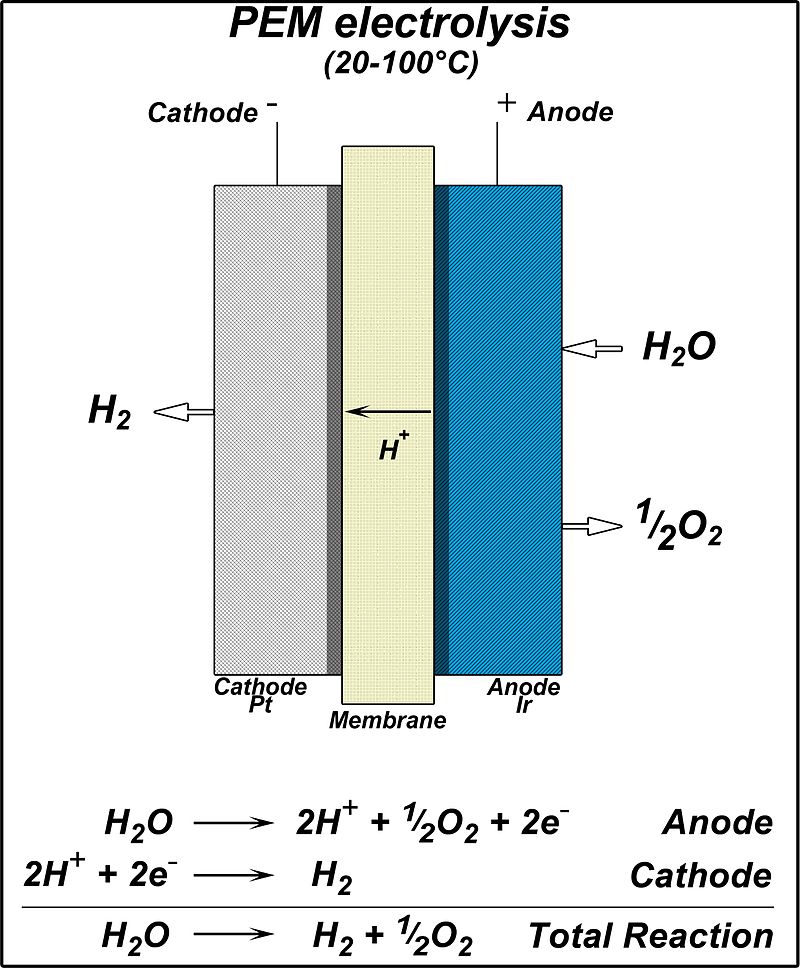
Schematic of a general PEM electrolyser. Source:
Wikipedia.
Within a PEM electrolyzer, oxygen (O2) is
produced from water (H2O) at the anode side via an Iridium oxide (or
Ruthenium oxide) catalyst, producing protons (H+) and electrons (e–)
in the process. The protons pass through the proton exchange membrane
(PEM, Nafion™), and hydrogen (H2) is produced on the cathode side via
a Platinum (or Platinum-Palladium alloy) catalyst.
Recent PEM developments have centered around two issues: i) the
relative scarcity of Iridium, which can be a limiting factor for
scaling up PEM electrolyzer manufacturing, and ii) the membrane
thickness, which limits the efficiency of the PEM electrolyzer.
Iridium loading as determining
factor for scale-up
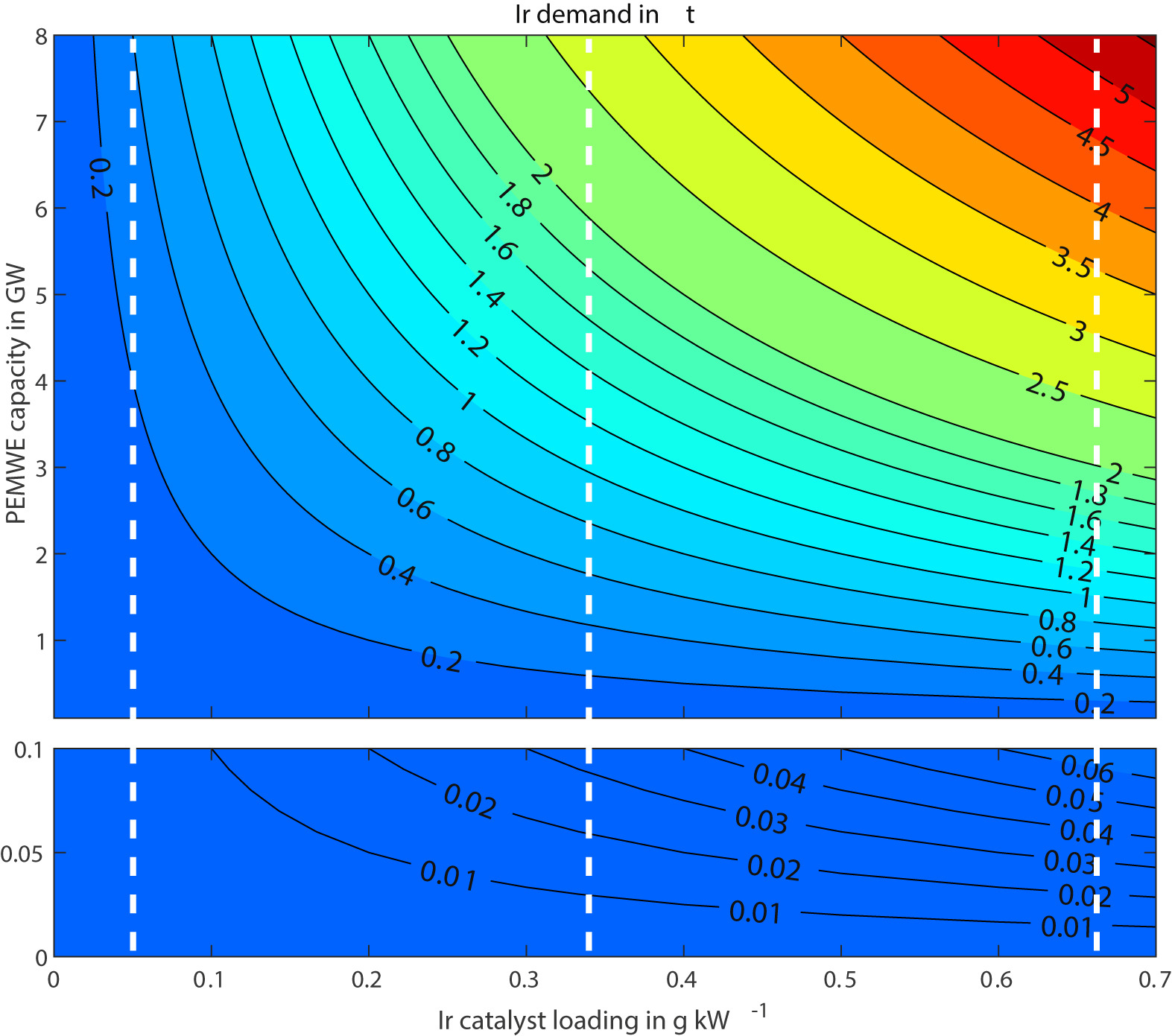
Iridium demand in tonnes, as
function of the PEM electrolysis capacity and Iridium catalyst
loading. From “Is iridium demand a potential bottleneck in the
realization of large-scale PEM water electrolysis?” (International
Journal of Hydrogen Energy, July 2021).
Iridium is one of the scarcest
metals, and is a byproduct of platinum mining. For every tonne of
platinum obtained from ores, about 39 kilograms of iridium is
produced. Iridium is used in LED technologies as well as
electrochemical processes (such as PEM electrolysis). In 2021, the
total global iridium production was just 7.9 tonnes, of which 89% was
produced in South Africa. The remaining production is in Zimbabwe and
Russia.
The global manufacturing capacity for PEM electrolysis is 1.55 GW per
annum, according to the IEA. Minke and co-workers estimated that about
0.67 gram Iridium is currently required per kW PEM electrolyzer. If
all manufacturing capacity for PEM electrolysis is utilized, this
would translate to an Iridium requirement of 1.0 tonne, or 13% of
global Iridium production capacity. Expansion of PEM electrolysis
manufacturing capacity is only possible if Iridium loading is reduced,
without compromising the catalyst activity. In the longer term,
recycling of Iridium from end-of-life PEM electrolysis stacks is
required to minimize additional Iridium requirements.
Precious metal company Heraeus
has already commercialized Iridium catalysts (H2EL-IrO) with a reduced
load down to 0.30 gram Iridium per kW. This would reduce the Iridium
requirement to 0.5 tonnes or 6% of global Iridium mining capacity. For
reference, Hereaus estimates that about 1-2 gram Iridium was required
per kW PEM electrolyzer before 2020.
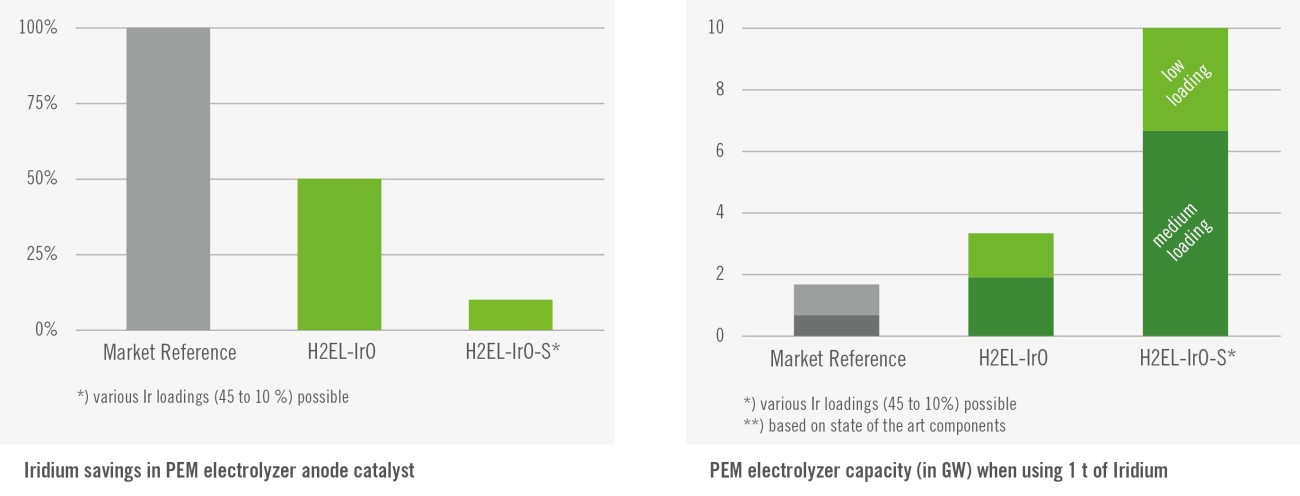
Iridium loading of market references and
Heraeus catalysts. Source: Heraeus.
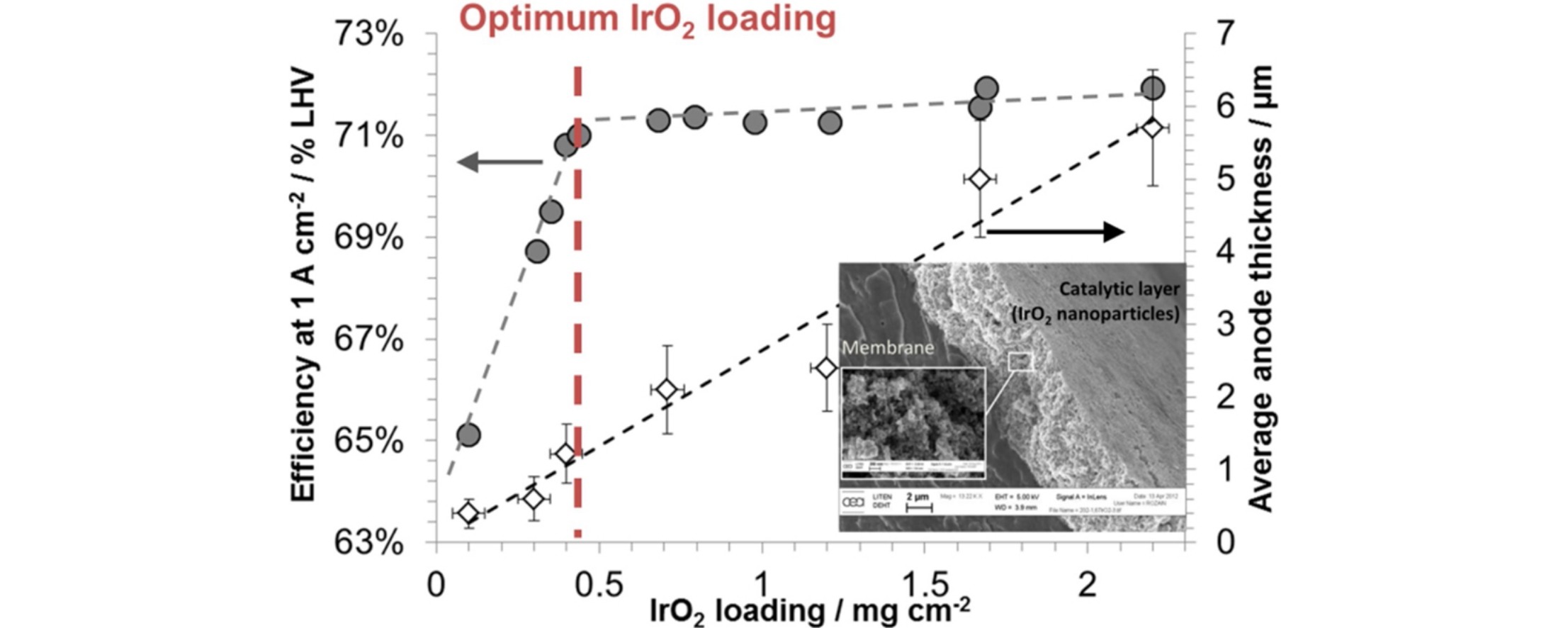
Effect of Iridium loading on PEM
electrolysis performance. 1 mg-IrO2/cm2 is equal to 0.335 g/kW. From
“Influence of iridium oxide loadings on the performance of PEM water
electrolysis cells: Part I–Pure IrO2-based anodes” (Applied Catalysis
B: Environmental, March 2016).
Further reduction in Iridium
loading is actively studied in Universities and research institutes.
Rozain and co-workers found that the performance for PEM electrolysis
was not compromised down to 0.13 gram Iridium per kW. Möckl and
co-workers have tested Iridium catalysts with loadings as low as 0.1
gram iridium per kW in long duration tests. Dutch research institute
TNO claims a 200 times reduction of Iridium loading, while retaining a
third of the performance compared to current PEM electrolyzers. Shi
and co-workers recently demonstrated Ruthenium oxide as an alternative
for Iridium.
Los Angeles-based PEM electrolysis start-up H2U Technologies has
demonstrated a completely Iridium free electrode for its PEM
electrolyzer, based on technology developed at the California
Institute of Technology.
Hystar: reducing the membrane thickness
HyStar is a Norwegian start-up and spinoff from SINTEF, which has
developed a novel PEM electrolysis cell configuration. The performance
of conventional PEM electrolysis is limited due to the thickness of
the proton exchange membrane (about 175 μm), causing resistance to
proton flow and therefore heat losses. However, this thickness is
required to prevent H2 crossover from the cathode to the anode side,
which could result in an explosive mixture for thinner membranes.
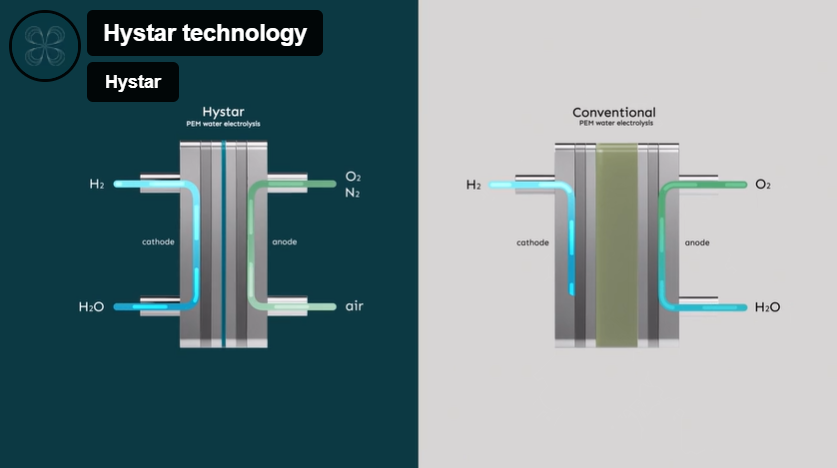
Hystar reduces this risk by
introducing humidified air on the anode side, instead of water. This
results in strongly diluted oxygen in a nitrogen atmosphere, reducing
the risk of an explosive mixture. Therefore, Hystar can utilize a
thinner membrane (20 μm). This allows the electrolyzer to operate at
2.5 times the current density compared to a conventional PEM
electrolyzer.
Green Play Ammonia™, Yielder® NFuel Energy.
Spokane, Washington. 99212
www.exactrix.com
509 995 1879 cell, Pacific.
Nathan1@greenplayammonia.com
exactrix@exactrix.com
|